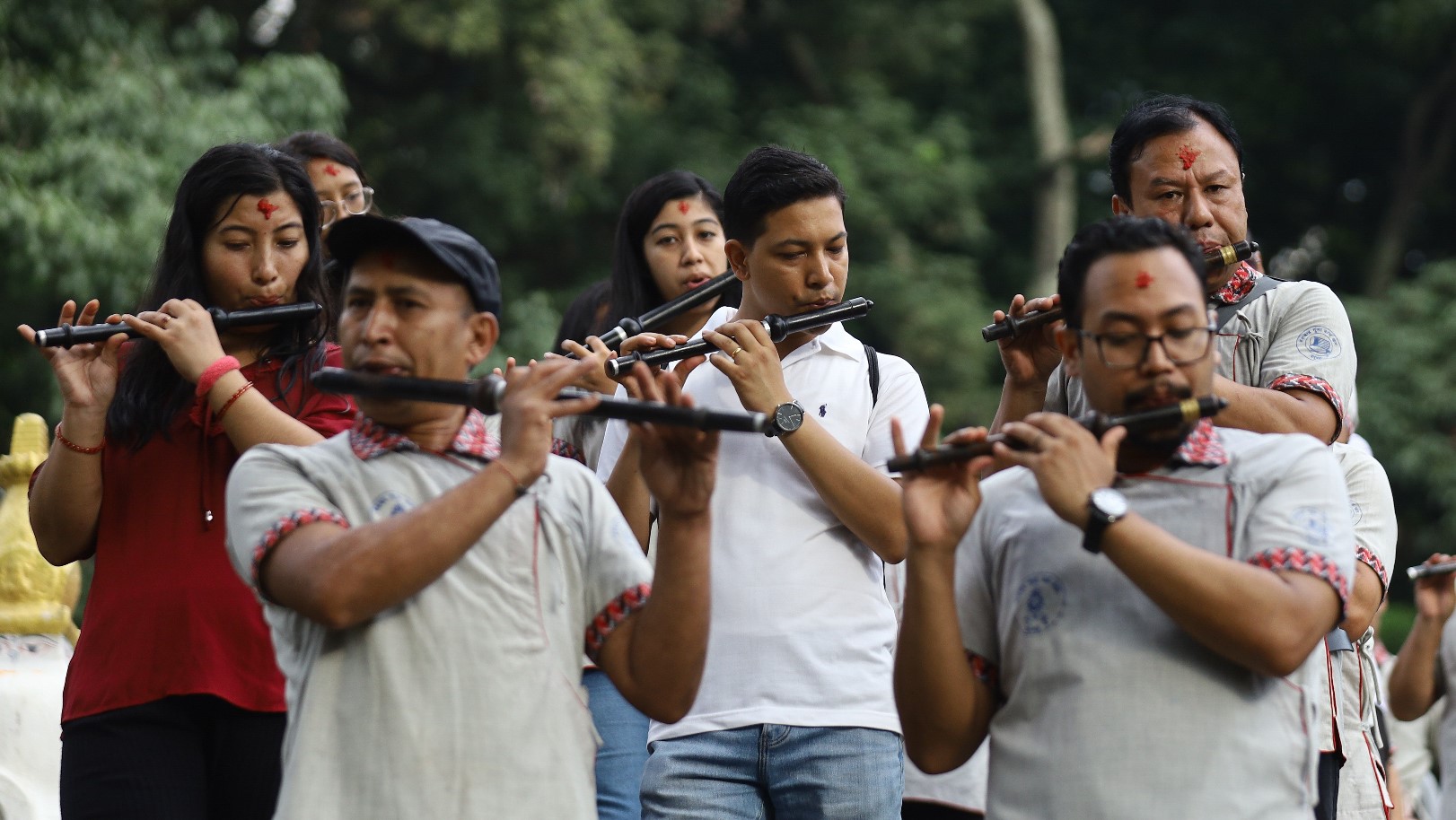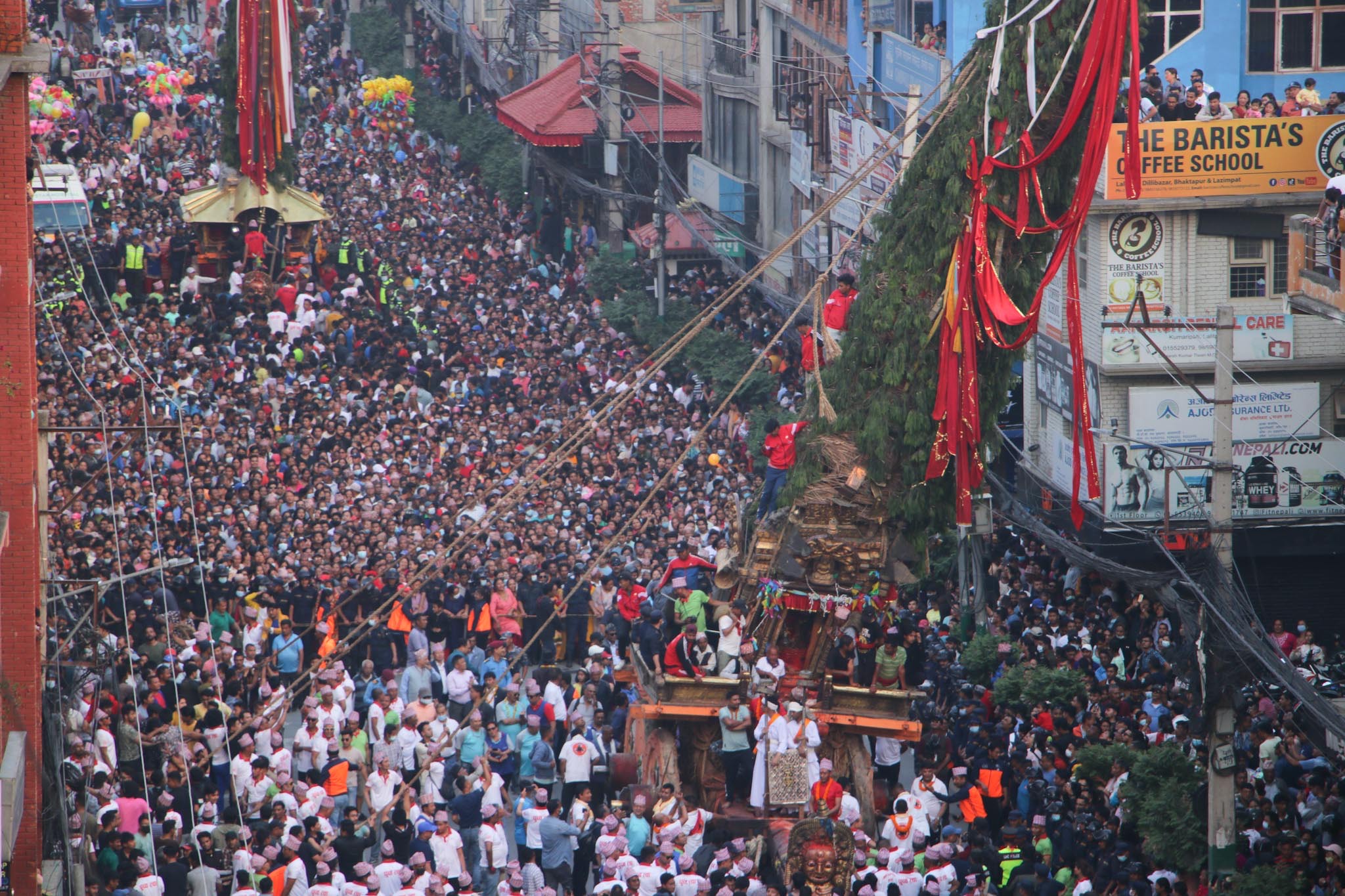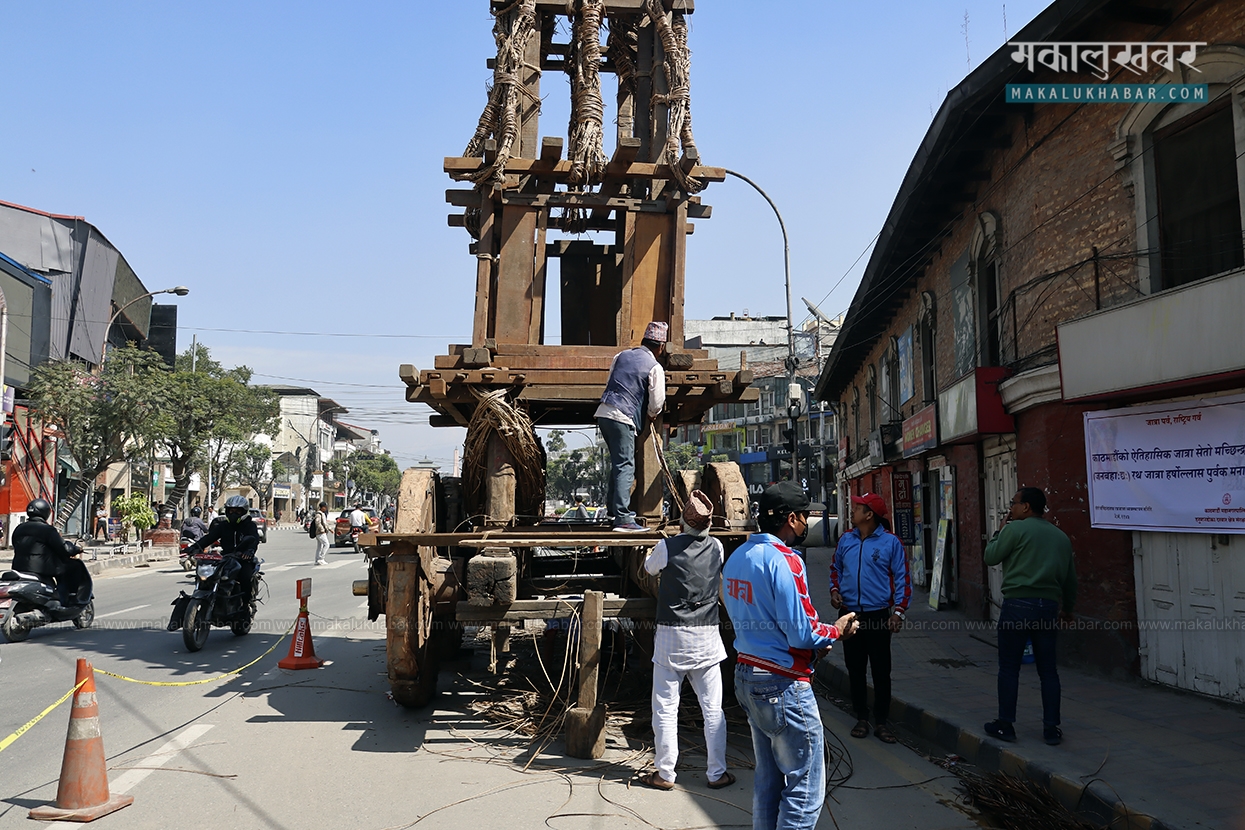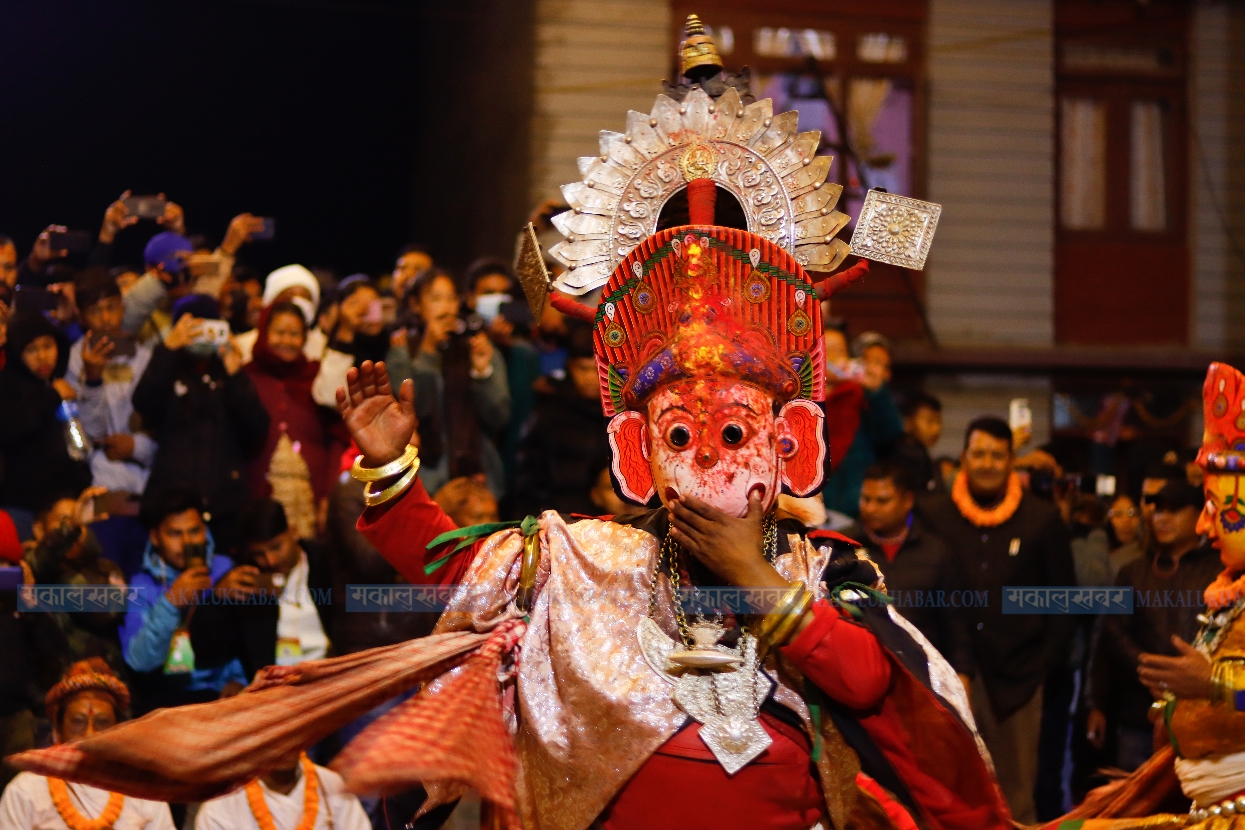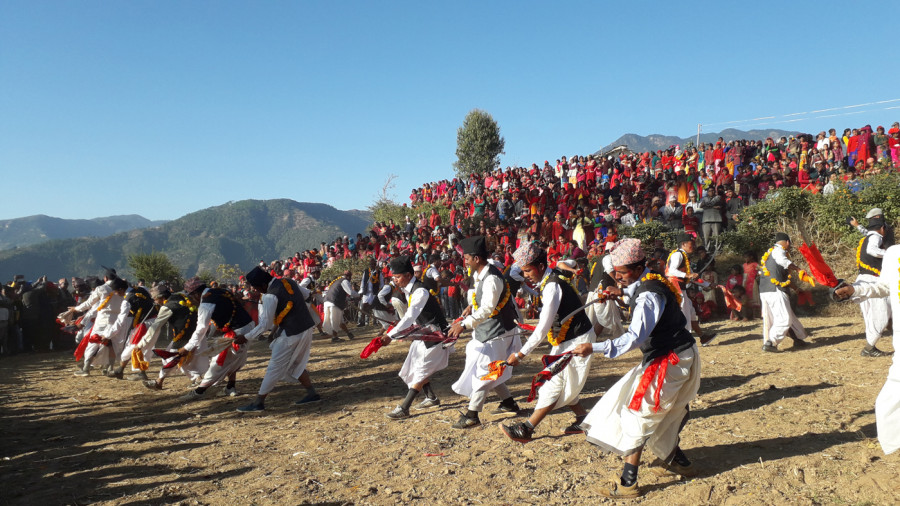Sorha Shraddha begins from today
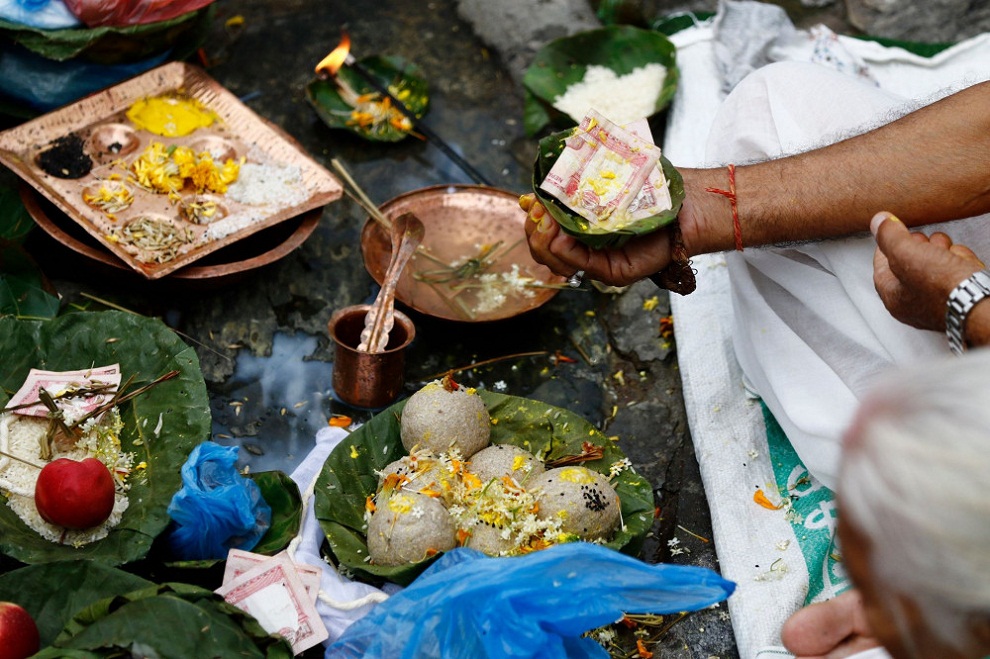
ITAHARI: SEPT. 21 – Pitri Paksha, also spelt as Pitru Paksha, (literally “fortnight of the ancestors”) is a 16–lunar day period when Hindus pay homage to their ancestors (Pitris), especially through food offerings. The period is also known as Pitri Paksha, Pitri Pokkho, Shora Shraddha (“sixteen shraddhas”), Kanagat, Jitiya, Mahalaya Paksha and Apara paksha.
Pitri Paksha is considered by Hindus to be inauspicious, given the death rite performed during the ceremony, known as Shraddha or tarpan.
It falls in the Hindu lunar month of Bhadrapada (September–October), beginning with the full moon day (Purnima) that occurs immediately after the Ganesh festival and ending with the new moon day known as Sarvapitri Amavasya, Mahalaya Amavasya or simply Mahalaya. In North India and Nepal, this period corresponds to the dark fortnight of the month Ashwin, instead of Bhadrapada.
When the rain-soaked and washed and flowed, all the Nepali land was drenched in rain this time, now the water has reached this year, the clouds have returned.
Heartfelt obeisance to all the relatives loved ones and animals who experienced the rain of this year, welcome on this auspicious day of the first day of Sorha Shraddha.
The 16-day Pitri Paksha has a big role to play at the beginning of the Dashain, 16 days of Pitri Paksha started from today. These 16 days are the homage fortnight to ancestors, ancestors mean Pitri in Sanskrit so these days are called Pitri Paksha.
Ancestors (Pitri) are taken as the centre of God and the ancestral homage (Pitrikarma) is taken as the centre of the eternal rites. Sorha Shraddha further clarifies the height and importance of Vedic Sanatan rites.
These mornings, the morning weather has started to give a hint with the fragrance of the festival, that is, the blueness of the sky and the cleanliness of the clouds are decreasing temperatures in these mornings, which give the feeling of Dashain in Nepal. Looking up at the sky, it seems as if pearls are scattered like pieces of clouds. Isn’t these all hints of Dashain?
These 16 holy days are called by different names like Sohra Shraddha, Pitripaksha, Kagan, Jitiya, Mahalaya Paksha, Pitru Pokho etc.
Starting from the full moon, this aspect lasts till the day of the Aaunshi. In Pitri Paksha, it is believed that ancestors come and live in the homes of their descendants on earth. Hindus perform Pitrikarya i.e. shraddha on the death tithi of their ancestors, on the day of shraddha, there is a special bustle in the house. This year will be very different from the previous, as COVID-19 risk condemns crowds and travels but our utmost prayers with ancestors to end this sooner could be.
Shraddha is one of the important deeds in Vedic Sanatan Hindu rites which is usually performed by the eldest son, if not the eldest son then other sons or brothers and even sisters of the family perform this. On the day of Sarvapitru Aunshi, the son pays homage to the fathers on both his father’s and mother’s side.
Based on the Hindu scriptures that the son is the path to salvation, the issue has been linked to anti-feminist and gender inequality from various angles. But the fact is, son and daughter both have their equal right, importance and different crucial roles in family and rituals. In every good deed and rite of Sanatan Dharma, the presence of the son as the doer has been given priority, but women have been given the same importance.
Shraddhakarma cannot be completed without the presence of nieces and nephews. Sons and daughters are the same for ancestors and the role of daughters in Pitrikarma and ceremonies is very commendable since prehistoric times. Religion and culture have given equal place to both children. Religion does not discriminate anywhere.
Now from the concept of Pitri and their world, it is believed that there are three generations of ancestors living in this world between heaven and earth. There is a belief in this ancestral world that crossing the Baitarni river will lead to heaven. It is believed that Indra is the king of the heavens and Yama is the king of the ancestral world.
Scriptural citations of Sorha Shradhha. Danvir Karna, who died in the battle of Mahabharata, was given gold and silver ornaments as food in heaven.
Out of curiosity as to why King Indra gave him gold, silver, etc. when he needed real food for hunger, Karna asks King Indra of heaven. In the answer, Indra makes it clear that Danvir Karna donated only gold and silver for the rest of his life and did not donate food to his ancestors, this is why his account on heaven had no provision of real food.
The legend that Karna was sent back to earth 16 days after Indra said that he had not donated food to his ancestors in his lifetime. It is considered the beginning of the Pitri Paksha.
In Vedic Sanatan Sanskar, Pitrikarma i.e. shraddha is usually performed twice, regular shraddha is performed on the tithi of exact death and another shraddha is performed during the period of Sorha shraddhas.
May peace and happiness prevail in every family with the beginning of this year’s Sorha Shraddha, may the blessings of the Pitri remain forever, may the door of heaven be opened and may the Pitris live in peace!
Food
The food offerings made to the ancestors are usually cooked in silver or copper vessels and typically placed on a banana leaf or cups made of dried leaves. The food must include Kheer (a type of sweet rice and milk, rice, dal (lentils), the vegetable of spring bean.

Rites of Shraddha
The male who performs the shraddha should take a purifying bath beforehand and is expected to wear a dhoti. He wears a ring of Kush. Then the ancestors are invoked to reside in the ring. The shraddha is usually performed bare-chested, as the position of the sacred thread worn by him needs to be changed multiple times during the ceremony.
The shraddha involves pinda-daan, which is an offering to the ancestors of pindas (cooked rice and barley flour balls mixed with ghee and black sesame seeds), accompanying the release of water from the hand. It is followed by the worship of Vishnu in form of the Kush, a gold image of Shaligram stone and Yama.
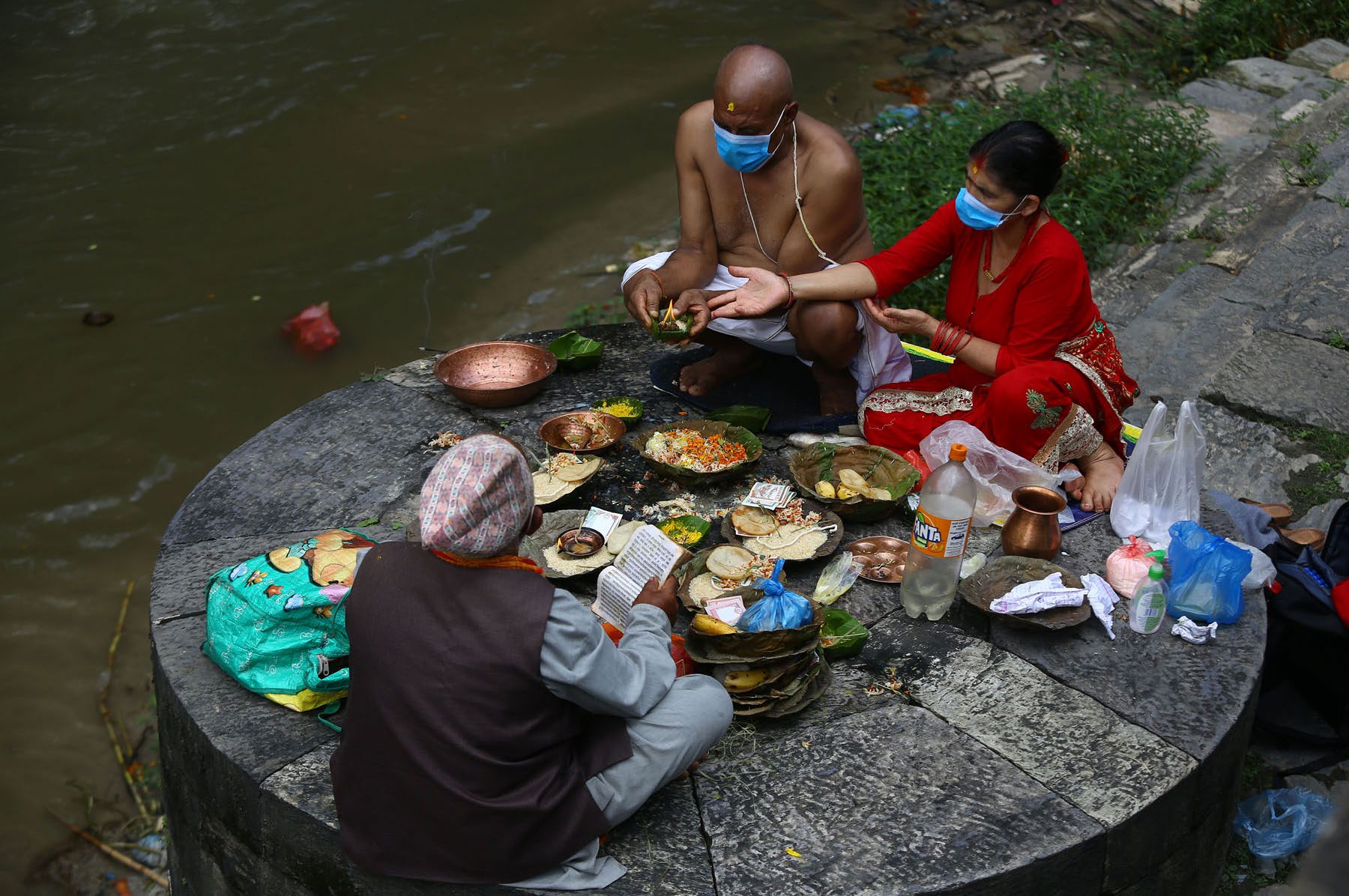
The food offering is then made, cooked especially for the ceremony on the roof. The offering is considered to be accepted if a crow arrives and devours the food; the bird is believed to be a messenger from Yama or the spirit of the ancestors. A cow and a dog are also fed, and Brahmin priests are also offered food. Once the ancestors (crow) and Brahmins have eaten, the family members can begin lunch.






